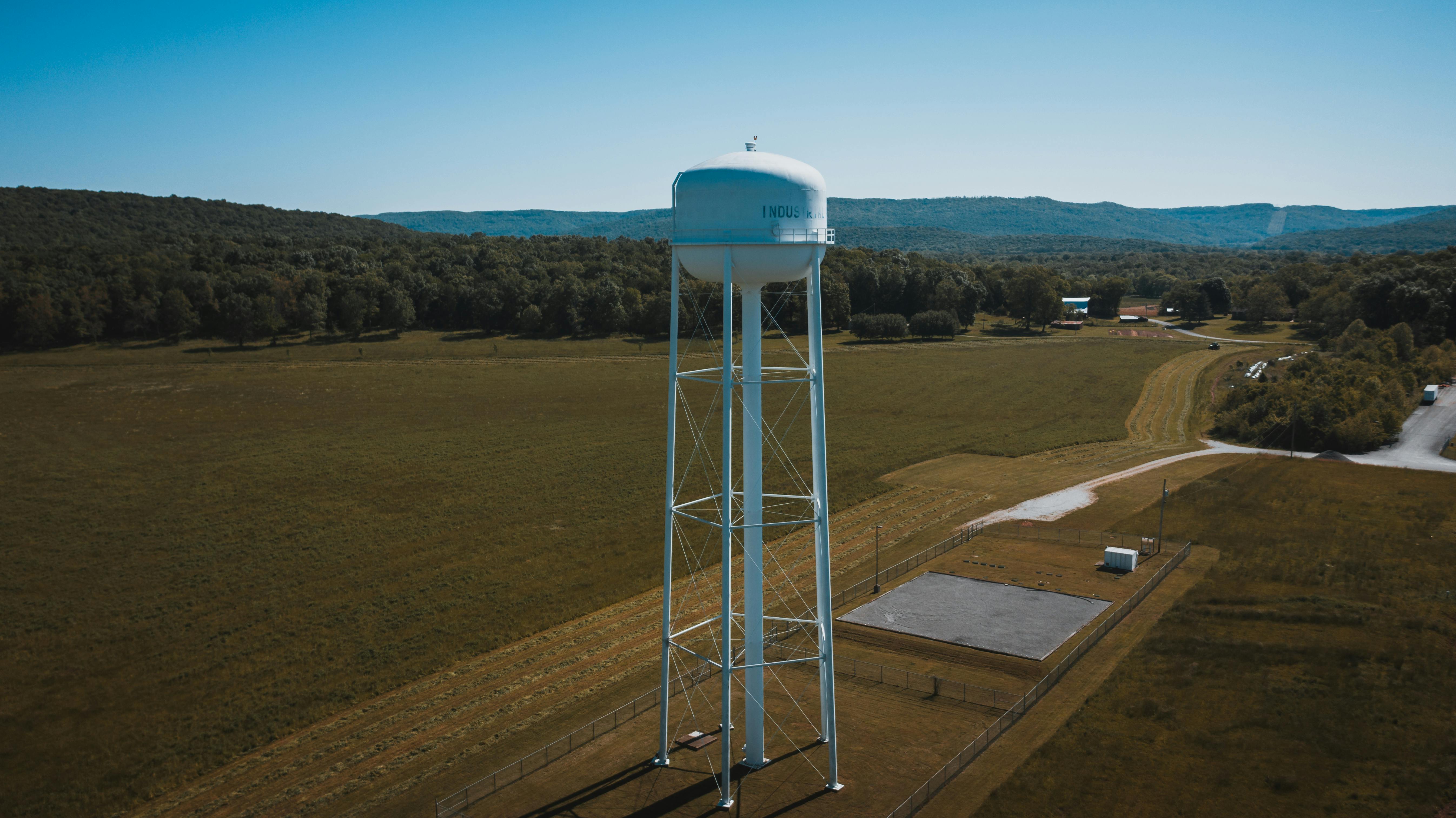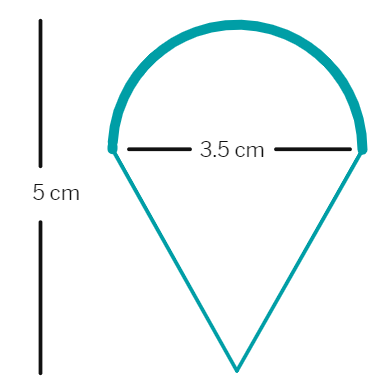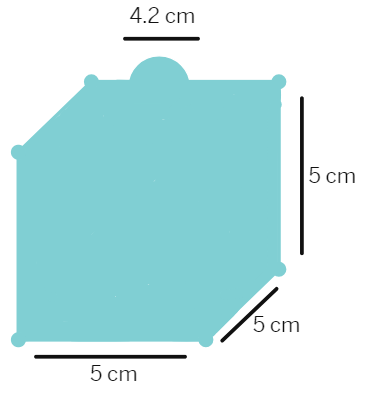Surface Area of a Combination of Solids
Let us consider the overhead container shown below. How do we find the surface area of such a solid?
Now, whenever we come across a new problem, we first try to see, if we can break it down into smaller problems, we have earlier solved. We can see that this solid is made up of a cylinder with two

If we consider the surface of the newly formed object, we would be able to see only the
So, the total surface area of the new solid is the sum of the curved surface areas of each of the
Total Surface Area of container = Curved Surface Area of one hemisphere + Curved Surface Area of cylinder + Curved Surface Area of other hemisphere
Let us now consider another situation. Suppose we are making a toy by putting together a hemisphere and a cone. Let us see the steps that we would be going through.
Check out the playing top below.
First, we would take a cone and a hemisphere and bring their flat faces together.
Here, of course, we would take the base radius of the cone equal to the radius of the
At the end of our trial, we have got ourselves a nice round-bottomed toy.
Now if we want to find how much paint we would require to colour the
We would need to know the surface area of the toy, which consists of the
When you encounter solids like this, the first thing you should do is find out what are the basic shapes hidden in this shape.
Once we know the basic shapes, it's just a matter of applying the formulas we know to get the surface area of the
We know that: Total surface area of the top(TSA) = Curved surface area(CSA) of
But, why CSA only? The surface area which we can see can only be painted.
We cannot see the base of neither
1. Rasheed got a playing top (lattu) as his birthday present, which surprisingly had no colour on it. He wanted to colour it with his crayons. The top isshaped like a cone surmounted by a hemisphere. The entire top is 5 cm in height and the diameter of the top is 3.5 cm. Find the area he has to colour. (Take π =

- From the figure: Total Surface Area of the toy =
surface area of hemisphere + surface area of cone - Curved surface area of the hemisphere =
- Substituting values
- Height of the cone = Height of the top – Height i.e.
of the hemispherical part. This is equal to cm. - Slant height of the cone (l) =
cm (Upto one decimal place) - CSA of cone =
where r and l are radius and slant height, respectively. - Substituting to get surface area of top
- The value is equal to
cm 2 - Thus, we have found the answer.
You may note that ‘total surface area of the top’ is not the sum of the total surface areas of the cone and hemisphere.
2. The decorative block shown in Fig. 12.7 is made of two solids — a cube and a hemisphere. The base of the block is a cube with edge 5 cm, and the hemisphere fixed on the top has a diameter of 4.2 cm. Find the total surface area of the block. (Take π =

- Total Surface Area of cube =
where a is the cube side length. - Substituting we get the value as
cm 2 - Note that the surface area of the cube where the hemisphere is attached is not included in the surface area.
- Thus, Surface area of the block = Total Surface Area of
– + - We know, Curved surface area of the hemisphere =
- Thus, the evaluated surface area =
cm 2 - Substituting the values
- Thus, we have found the answer.
3. A wooden toy rocket is in the shape of a cone mounted on a cylinder. The height of the entire rocket is 26 cm, while the height of the conical part is 6 cm. The base of the conical portion has a diameter of 5 cm, while the base diameter of the cylindrical portion is 3 cm. If the conical portion is to be painted orange and the cylindrical portion yellow, find the area of the rocket painted with each of these colours. (Take π = 3.14)

- Let radius of cone by r1, slant height of cone by l, height of cone by h1, radius of cylinder by r2 and height of cylinder by h2.
- Given: r1 = 2.5 cm, h1 = 6 cm, r2 = 1.5 cm, h2 = 26 – 6 =
cm - Slant height (l) =
r 2 + h 2 2.5 2 + 6 2 cm - Here, the conical portion has its circular base resting on the base of the cylinder, but the base of the cone is larger than the base of the cylinder.So, a part of the base of the cone (a ring) is to be painted.
- Thus, Area to be painted (orange)= CSA of the cone +
– - Substituting we get the evaluated surface area =
cm 2 - Putting the values
- Now, Area to be painted (yellow)= CSA of the
+ base area of - Substituting we get the evaluated surface area =
cm 2 - Putting the values
- Thus, we have found the answers.
4. Mayank made a bird-bath for his garden in the shape of a cylinder with a hemispherical depression at one end. The height of the cylinder is 1.45 m and its radius is 30 cm. Find the total surface area of the bird-bath. (Take π =

- Let h be height of the cylinder, and r the common radius of the cylinder and hemisphere.
- We see that: Total surface area of the bird-bath =
of cylinder + of hemisphere - Total surface area of the bird-bath =
+ which further gives - Substituting we get the evaluated surface area =
cm 2 - In
m 2 m 2 - Thus, we have found the answer.
